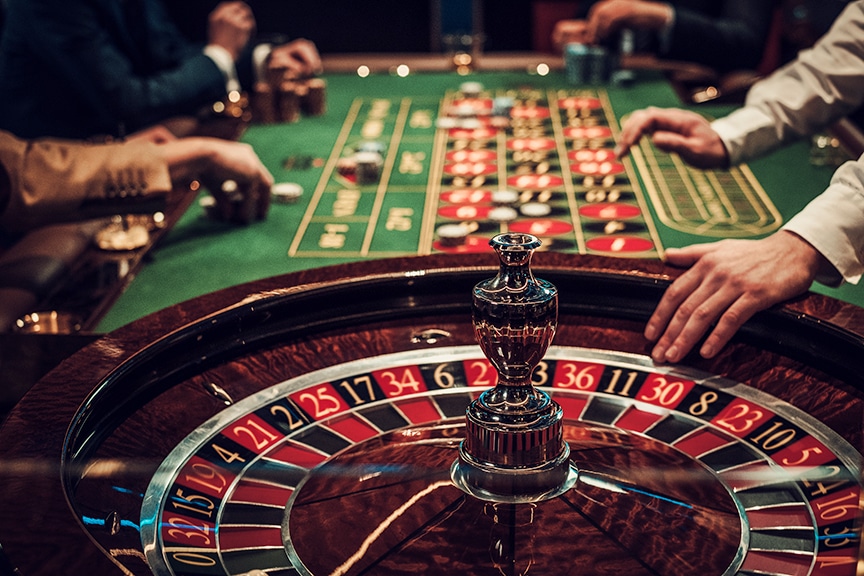How Gaming Establishments Use Shade and Design to Entice Players

Within a lively and exciting world of casinos, where luck and strategy intertwine, hues and aesthetic play a pivotal role in drawing in players. https://78win1.dev As soon as players step into a casino or access a gaming platform, they are immersed in a sightly feast that grabs their attention and entices them to explore further. Bright colors, captivating graphics, and innovative layouts are carefully crafted to create an environment of thrill and expectation, ultimately improving the gaming encounter.
While gamblers move through the dynamic landscape of casino games, they come across a range of designs that not only serve visual purposes but also influence emotions and choices. Hues like red and gold symbolize riches and luck, while calm blues and greens can create a much tranquil environment. Grasping how these elements function together allows casinos to create an inviting and energizing atmosphere that encourages players to engage with the games, invest more time at the tables, and increase their general enjoyment.
The Study of Tint in Gambling Games
Hue plays a key role in the design of gambling games, influencing player emotions and actions. Lively and striking hues, such as scarlet and amber, are often used to stimulate excitement and attract notice. These hues create a sense urgency and energy, encouraging participants to participate more readily with the activity. By strategically selecting colors, developers aim to inspire emotions of satisfaction and excitement, which can enhance the complete game experience.
Distinct colors also have psychological connotations that can affect how participants perceive their chances of victory. For example, emerald is frequently associated with fortune and abundance, making it a well-liked choice in games like roulette and poker games. This association can result players to feel more positive and assured in their play, ultimately motivating them to wager more. Grasping these links allows game creators to design environments that enhance player enjoyment and engagement.
In addition, the layout of casino game interfaces often uses blended colors and opposing shades to direct player actions. For case, winning combinations may be emphasized with striking, opposing hues, creating a visual incentive. This method strengthens favorable outcomes and promotes repeated participation. By leveraging color psychology, gambling establishments can develop games that not only captivate participants but also keep them involved and committed in their gaming experience.
Design Elements that Engage Gamers
The visual appeal of casino games is largely influenced by the use of bold colors. Lively and contrasting colors are deliberately chosen to create an inviting atmosphere that captures attention. For example, reds and golds often signify good fortune and wealth, which is why they are prevalent in the color schemes of gaming machines and table surfaces. These colors not only draw players in, but they also stir emotions associated with excitement and anticipation, enhancing the total gaming experience.
In addition to color, the design and organization of gambling games play a crucial role in captivating players. Games are designed to be user-friendly, ensuring that players can quickly understand the rules and gameplay. Accessible interfaces, along with captivating graphics and motion, help maintain player interest and promote longer play sessions. The tactile elements, such as the feel of the controls and the sounds of the games, also add to a comprehensive sensory experience that keeps players engaged.
Finally, thematic elements in game design can greatly influence player choice. Many casino games are inspired by media, myths, or adventure themes, incorporating symbols and characters that resonate with players. These themes create a sense of engagement and relatability, making each game feel distinct. When players feel a connection to the theme, they are more likely to opt for that game over others, leading to higher participation and enthusiasm within the casino environment. 78WIN01
Case Studies: Successful Casino Game Designs
One prime example of effective casino game design is the well-known slot machine series based around blockbuster movies. Games such as those based on the Wizard of Oz and Game of thrones utilize vibrant colors and superior graphics to immerse players in familiar narratives. The application of moving visuals and engaging sound effects grabs the focus of players, creating an emotional connection to the theme. This tactic not just fosters longer play but also boosts the overall gaming experience, leading to increased player retention.
Another notable case is the use of color in table games like blackjack and the wheel. Casinos often design these games with deep reds and greens, colors traditionally linked with luck and wealth. For instance, the emerald felt on a 21 table provides a relaxing effect, while the red accents in roulette invite thrill. This deliberate use of color helps to foster an inviting atmosphere that encourages players to participate, addressing their psychological impulses and enhancing their enjoyment.
Finally, online casino games that include social features and bright, lively designs have seen remarkable success in engaging players. Games like Zynga Poker and Slot-O-Mania leverage vivid colors and playful animations to forge an inviting online environment. The inclusion of leaderboards, social sharing options, and in-app rewards encourages competition and community, pulling players in for longer sessions. Such designs merely make the games visually appealing but also emphasize community engagement, a key factor in player retention and engagement within digital casino environments.
